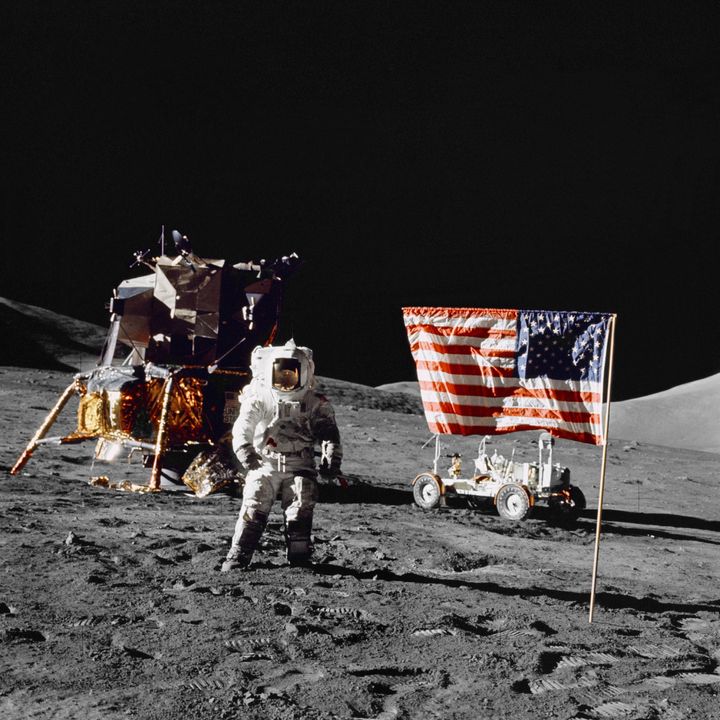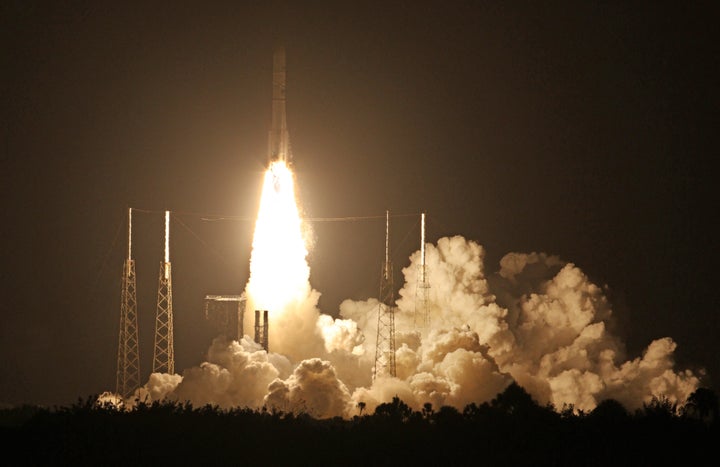
A rocket is heading to the Moon right now in a bid to make the first US lunar soft landing in more than 50 years.
This is significant – humans have not been on the Moon since 1972, and this mission is a step towards getting people walking on our lunar satellite once again.
The US spacecraft, Peregrine, was launched from Florida on Monday and is meant to perform a controlled landing on the Moon next month.
It would be the first US mission in 51 years to complete a soft touch-down, and should reach the Moon on February 23, 2024.
It would also be the first lunar adventure ever organised by a private company, although it was contracted by NASA to carry equipment to look at the Moon’s surface environment.
But, why has it been so long since we last walked on the Moon?
We first achieved it back in July 1969, with the US’s Apollo 11 Moon landing.
More trips soon followed that initial success, meaning 12 people in total walked on the Moon (out of 24 people who made the journey).
But Apollo 17′s mission in 1972 was the last time a human touched the Moon.
The trip broke all kinds of records, such as the longest space walk, the longest lunar landing and the largest lunar samples – but, no-one has been back since.
The subsequent Apollo 18 was cancelled, even though 20 missions had originally been planned.
Why? Well, NASA realised just how expensive those moon landings were.
The trip allegedly ended up costing a lot more than anticipated – around $257 billion (£201 billion), when adjusted to today’s level of inflation. This cost became a point of contention for the US public.
So the US decided it had already won the space race because it got a person on the Moon so quickly – even though the Soviet Union were actually the first to send a spacecraft to the Moon in 1959.
Moons walks were also seen as less important than the lunar research which could be carried out with uncrewed vehicles.
According to the Royal Museums Greenwich, the end of the Cold War also meant missile production fell – including those which were used for space travel.
But, although crewed missions stopped, we have regularly visited space in the years since.
In fact, there have been 147 launches to the Moon in total over the years, from countries all around the world.
The International Space Station is always inhabited in low Earth orbit – a project between the US, Russia, Japan, Europe and Canada where astronauts live for about six months at a time.
The space race is hotting up again, though.
Peregrine will be one of many expected to try and reach the Moon in 2024. The BBC reported there could be as many as eight including from Japan and China.
In fact, as the Peregrine won’t land until next month, the first expected touch-down attempt for the year will be from Japan’s space agency on January 15.
Countries are competing to try and understand how water works on the Moon in the hope that it could help astronauts either for drinking, sanitation or as the basis for fuel.
NASA’s Artemis programme, launched in 2017, is looking to get people back on the Moon very soon.
NASA also wants to set up a constant human presence on the Moon by 2025 and on other planets.
“This time when we go to the Moon we’re going to stay. That’s what we’re looking to do,” then NASA administrator Jim Bridenstine predicted back in 2019.

